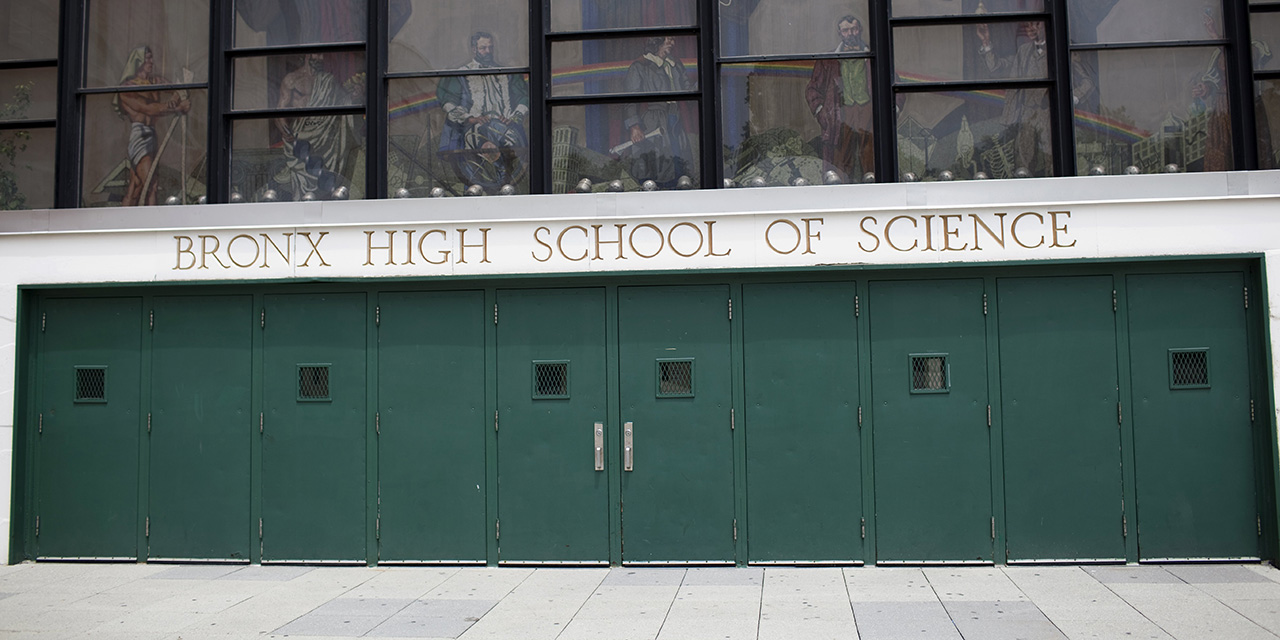
Last month, the New York City Department of Education released the demographics for incoming ninth-graders to New York City’s eight specialized high schools—the city’s prestigious public schools that admit students based primarily on their performance on the Specialized High School Admissions Test (SHSAT).
Predictably, several articles highlighted the low numbers of black and Hispanic students. Some commentators claimed that this result shows worsening segregation in New York City public schools. Others argued that it offers more proof that both the SHSAT and the specialized high schools themselves should be phased out.
Finally, a reason to check your email.
Sign up for our free newsletter today.
These criticisms miss the mark. The real problem lies not in the test but in the different levels of preparation of those who take it. If New York City wants to increase diversity in its specialized high schools, it needs to focus on its underprepared students. In particular, it must tackle the problem of chronic absenteeism, which disproportionately affects black and Hispanic students.
The SHSAT is an extremely challenging exam that students take at the beginning of eighth grade. It determines admission to some of the most competitive high schools in the country, including Stuyvesant and Bronx Science. Achieving a good score usually requires more than a year of intensive preparation.
The test has long been a target for the city’s progressives. In 2019, Mayor Bill de Blasio proposed the elimination of the SHSAT. Earlier this year, Democratic mayoral candidate Zohran Mandani said that he would implement the recommendations of the 2019 School Diversity Advisory Group, which proposed “a moratorium on the creation of new screened high schools” and recommended that the city “[e]nsure that all high school admissions criteria are transparent and designed to reduce the racial and socioeconomic isolation currently prevalent in most high schools.”
These critics often neglect an important explanation for the schools’ lack of racial diversity: the various opportunities available to exceptional black and Hispanic students that lead them to make other choices. Private high schools in New York City provide generous scholarships (typically not extended to Asian and white students) to increase the diversity of their student bodies.
For example, South Bronx schoolteacher Gary Simons created Prep for Prep in 1978 to “offer access for young people of color” to great schools. Its students receive $40 million every year in financial aid to attend private schools. Why would they invest their time preparing for the SHSAT when they can focus on applications to private high schools, knowing they have a strong chance of receiving a substantial scholarship?
In contrast, students who dedicate months or even years to preparing for the SHSAT recognize that this exam often represents their best—and sometimes only—opportunity for access to a free, high-quality high school.
Students admitted to New York’s specialized high schools also come from racial groups that, on average, have spent considerably more time in school. The students starting ninth grade this fall were in seventh grade during the 2023–24 school year—the most recent year for which absenteeism data are publicly available in New York. The attendance disparities by race for this cohort are striking: 36.4 percent of black and 36.6 percent of Hispanic seventh-graders were chronically absent during the 2023–24 school year. By contrast, only 23.9 percent of their white and 13.1 percent of their Asian counterparts were chronically absent.
This absenteeism trend has persisted for years. During the 2018–19 school year, when these students were in second grade, their chronic absenteeism rates were 32.1 percent for black students, 27.3 percent for Hispanic students, 13.4 percent for white students, and 10.7 percent for Asian students.
Surveys and research also show that U.S. black and Hispanic students spend significantly less time doing homework compared with their Asian peers. Time on task is crucial for educational achievement. Because black and Hispanic students, on average, miss more school days throughout elementary and middle school and spend less time studying, it’s unreasonable to expect them collectively to perform at the same levels as other groups.
Striving to increase racial diversity in specialized high schools is a worthy goal. Trying to do so while ignoring the underlying issues affecting minority achievement is not. Far too few black and Hispanic students are adequately prepared to succeed when taking the SHSAT. Without better preparation, they would fare no better in the specialized high schools’ accelerated courses.
The solution is to ensure that all students, regardless of race, have access to high-quality elementary and middle schools, and that they consistently attend classes. No educational intervention can succeed if the problem of chronic absenteeism persists. City leaders should boost performance by setting a goal to get all students to attend school for at least 90 percent of the academic year.
We shouldn’t direct outrage at the SHSAT for unequal outcomes. Instead, we should be outraged at a public education system that spends more than $40 billion annually yet accepts chronic absenteeism, low academic engagement, and a lack of test preparation, especially among minority students. Address these issues, and the racial achievement gaps will begin to narrow.
Photo by Robert Nickelsberg/Getty Images
City Journal is a publication of the Manhattan Institute for Policy Research (MI), a leading free-market think tank. Are you interested in supporting the magazine? As a 501(c)(3) nonprofit, donations in support of MI and City Journal are fully tax-deductible as provided by law (EIN #13-2912529).
Source link

















